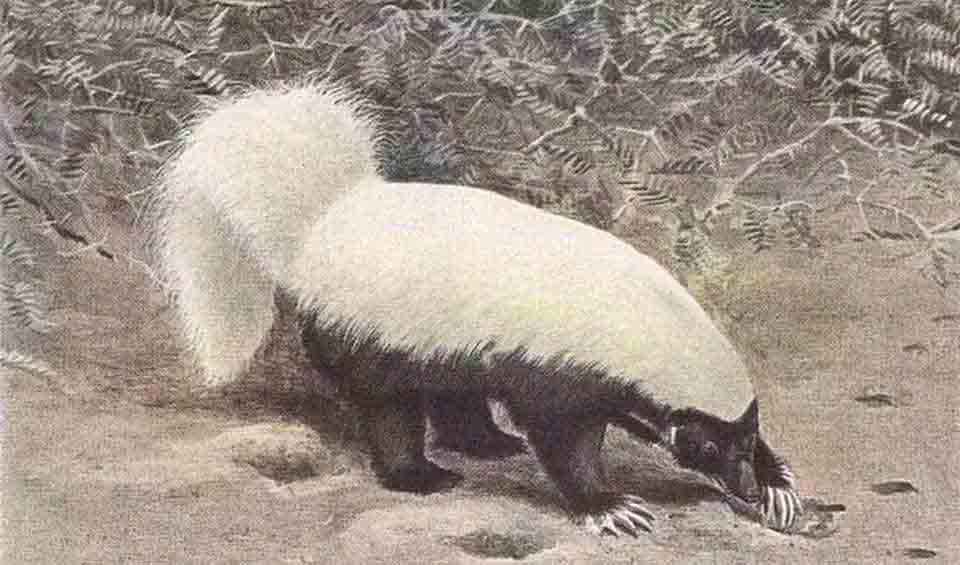Conepatus – Hog-nosed skunks
With their powerful upper bodies and impressive digging capabilities, they are well-equipped to navigate even the roughest terrains
Their name, derived from the Latin word “cone-shaped,” refers to their distinctively shaped snouts, which are longer and more pronounced than other skunks. This distinctive feature, coupled with their black and white coloration and bushy tails, makes them easily recognizable. Native to the Americas, these mammals occupy a range of habitats, from forests and grasslands to the outskirts of urban areas, adapting well to various environmental conditions.
Hog-nosed skunks are notable for their striking black and white coats, which warn potential predators of their potent defense mechanism. When threatened, they release a foul-smelling substance from their anal glands. This skunk spray is a complex mixture of sulfur-containing chemicals that can irritate the eyes and skin, and its pungent odor can be challenging to remove. This defense strategy is highly effective in deterring predators, allowing the skunk to escape harm.
As omnivores, hog-nosed skunks play a significant role in their ecosystems. Their diet includes a variety of small mammals, birds, insects, and plant matter, making them integral in controlling pest populations and maintaining ecological balance. By preying on a wide array of species, they help regulate community dynamics and prevent any one species from becoming overly dominant.
The fur and skins of hog-nosed skunks have been valued for various uses, including the making of clothing, rugs, and other products. While this has led to their hunting and trapping in some areas, it also highlights the cultural and economic importance of these animals in certain regions. However, the conservation of hog-nosed skunks and their habitats is crucial to ensure that they continue to thrive and fulfill their ecological roles.
Species in this genus
Molina’s hog-nosed skunk
Its pig-like nose is sensitive and flexible, helping it locate underground prey like grubs and worms
American hog-nosed skunk
When they encounter a threat, the first resort is to run to a safe area rather than spraying at the enemy



